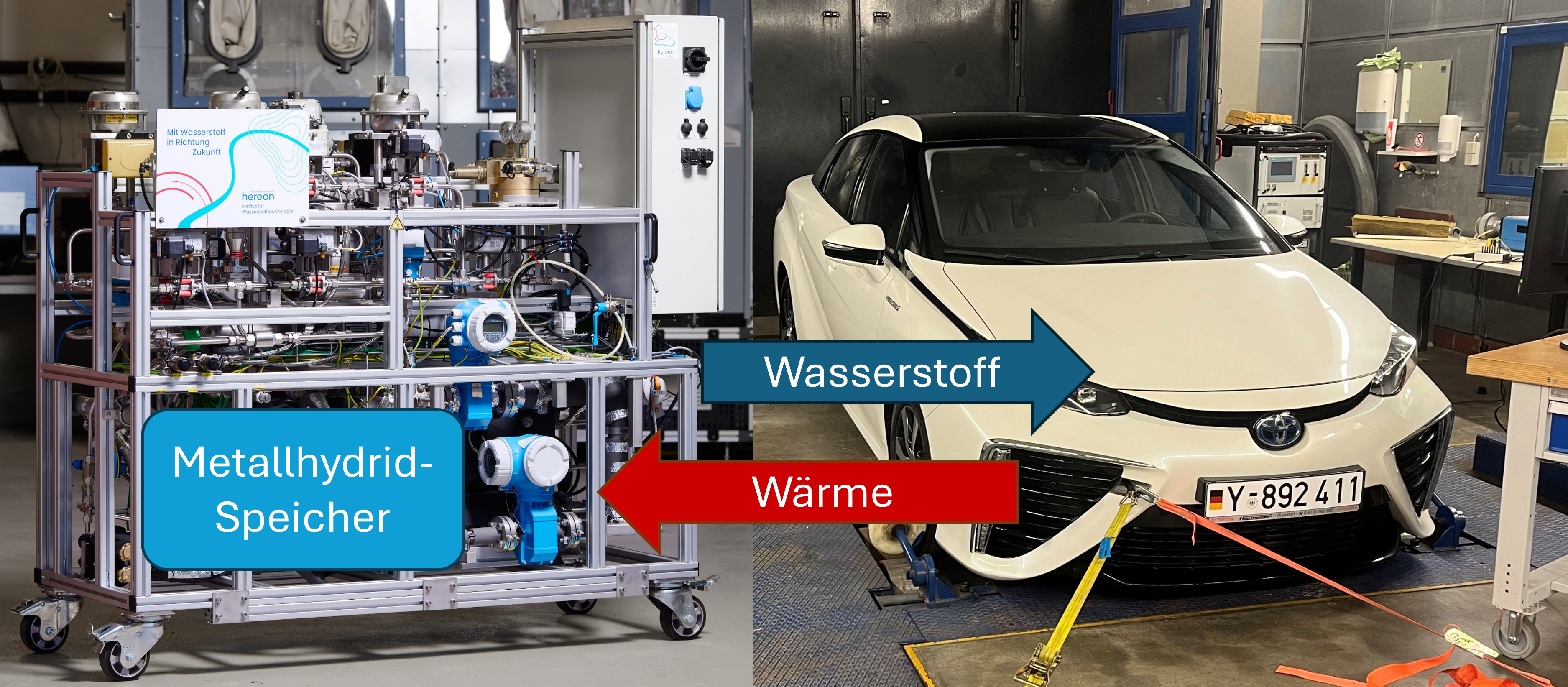
Coupling Innovative Hydrogen Storage Systems with Fuel Cell Vehicles in Real-Life Application Scenarios
The use of hydrogen as an energy carrier in mobile applications is hampered by the use of technically complex compressed gas or liquid storage systems and their energy losses. Hydrogen storage systems based on metal hydrides can offer a remedy [1]. These store the hydrogen chemically bound in a carrier material (metal or metal alloy such as magnesium or titanium-iron) safely and compactly and release the hydrogen completely reversibly when heat is added. The heat can be obtained entirely from the waste heat of a fuel cell system to which the storage unit is coupled. As part of the research cooperation with the Helmholtz Center Hereon, the use of metal hydride storage systems for mobile applications is being investigated:
The metal hydride storage unit replaces the existing 700 bar pressure storage unit from a production Fuel Cell Electric Vehicle (FCEV). The power flows, thermal management and efficiency as well as possible operating strategies of the metal hydride storage system are being investigated. In addition to constant load conditions, challenging conditions such as a cold start or continuous full load are also tested. The loads on the overall system are implemented on a chassis dynamometer with the aid of a driving robot based on the WLTP (Worldwide Harmonized Light Vehicles Test Procedure) conditions [2].
The use of fully integrated metal hydride storage tanks shows that a significantly higher quantity of hydrogen can be stored in the same installation space and at a lower pressure level compared to the current 700 bar pressurized gas tanks. Furthermore, the additional heat sink leads to a smaller vehicle radiator, which means that more effective installation space is gained.
Research Partner:
Contact:
[1] Bellosta von Colbe, J., et al., Application of hydrides in hydrogen storage and compression: Achievements, outlook and perspectives. International Journal of Hydrogen Energy, 2019. 44(15): p. 7780-7808.
[2] Lohse-Busch, H., et al., Automotive fuel cell stack and system efficiency and fuel consumption based on vehicle testing on a chassis dynamometer at minus 18 °C to positive 35 °C temperatures. International Journal of Hydrogen Energy, 2020. 45(1): p. 861-872.
Letzte Änderung: 13. October 2025

